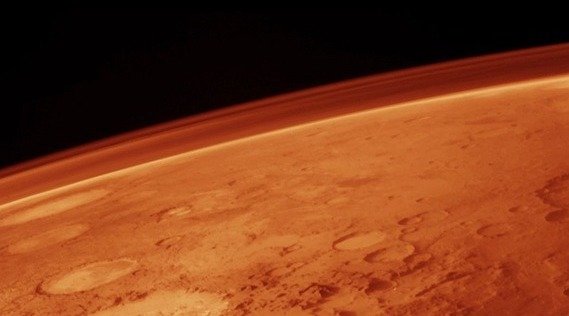Researchers in China say they have harnessed the power of artificial intelligence (AI) to create an AI-powered robot chemist that can synthesize water from Martian meteorites to produce oxygen.
The innovative approach could revolutionize future crewed missions to Mars by eliminating the need to transport oxygen and catalysts from Earth, making exploration of the red planet more cost-effective and sustainable.
Scientists from the University of Science and Technology of China in Hefei, led by Dr. Jun Jiang, published their findings in Nature Synthesis.
In experiments, researchers employed a mobile machine with a robotic arm to analyze five Martian meteorites, uncovering materials that could serve as catalysts for splitting water molecules into oxygen and hydrogen.
The AI-powered robot chemist used a combination of acid and alkali to dissolve and separate the meteorite material to discover a chemical compound that could break down water from ice located under the Martian surface and at its poles.
Examining nearly 4 million possible chemical formulas, the AI-powered robotic chemist successfully identified an oxygen-evolution reaction catalyst capable of extracting oxygen from water.
Typically, it might take a human researcher roughly 2,000 years to find the optimal formula for a catalyst that could produce oxygen from water. However, the AI system could complete the task in less than 5 hours.
Researchers say the entire process, “including Martian ore pretreatment, catalyst synthesis, characterization, testing and, most importantly, the search for the optimal catalyst formula,” can be performed entirely by the AI-powered robot, without human intervention.
“We have developed a robotic AI system that has a chemistry brain,” Dr. Jiang told Nature. “We think our machine can make use of compounds in Martian ores without human guidance.”
According to the researcher’s calculations, the AI-powered robotic chemist could produce nearly 60 grams of oxygen per hour for every square meter of Martian material. Moreover, Dr. Jiang says the system can work “continuously for years,” drastically reducing the need for astronauts to transport oxygen from Earth.
Some experts argue that there are more straightforward methods for producing oxygen on Mars, such as the results produced by NASA’s Mars Oxygen In-Situ Resource Utilization Experiment (MOXIE) on board NASA’s Perseverance rover.
Dr. Michael Hecht, lead MOXIE researcher and associate director of the Massachusetts Institute of Technology’s Haystack Observatory, says MOXIE has already successfully produced oxygen from the Martian atmosphere, primarily composed of carbon dioxide.
So far, MOXIE has only generated limited amounts of oxygen due to the limitations of Preserverance’s power system, which can only provide about 100 watts of power. However, Dr. Hecht says the MOXIE can easily be scaled up, and with enough power, it could produce ample oxygen for future human settlements on Mars.
“You can produce two to three kilograms an hour,” Dr. Hecht told Nature. “There’s zero obstacle to scaling this up.”
NASA describes MOXIE as a “tech demo,” noting that a “Big MOXIE” capable of pumping out 25,000 to 30,000 watts of power would be needed to produce the 25 to 30 tons of oxygen required by a small crew of human explorers. NASA says a “Big MOXIE” could also produce enough oxygen to serve as rocket fuel oxidizer for return trips to Earth.
“To support a human mission to Mars, we have to bring a lot of stuff from Earth, like computers, spacesuits, and habitats,” Dr. Jeff Hoffman, MOXIE Deputy Principal Investigator, explained. “But oxygen? If you can make it there, go for it — you’re way ahead of the game.”
Despite the skepticism, Dr. Jiang’s team remains undeterred, highlighting that their AI-powered robotic chemist could also identify various other catalysts on Mars, including fertilizer to stimulate the growth of Martian flora.
“Different chemicals can be made by this robot,” said Dr. Jiang, hinting at the broad range of potential applications for their technology. The approach could also extend beyond Mars, with Dr. Jiang considering the possibility of using it on lunar soil.
Ultimately, the demonstration of an AI-powered robot chemist capable of generating oxygen from Martian water underscores the transformative ways artificial intelligence could shape our future endeavors.
While challenges remain, this breakthrough could hold immense potential for making Mars missions more sustainable, cost-effective, and self-sufficient, ushering in a new era of space exploration powered by artificial intelligence and innovative chemistry.
Tim McMillan is a retired law enforcement executive, investigative reporter and co-founder of The Debrief. His writing covers defense, national security, and the Intelligence Community. You can follow Tim on Twitter: @LtTimMcMillan. Tim can be reached by email: tim@thedebrief.org or through encrypted email: LtTimMcMillan@protonmail.com

